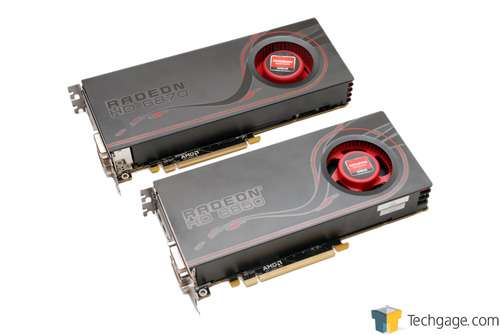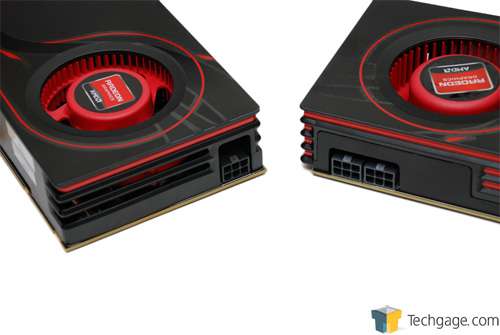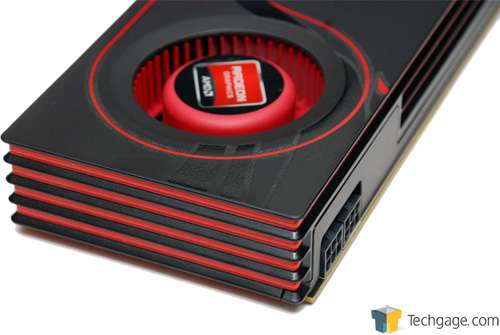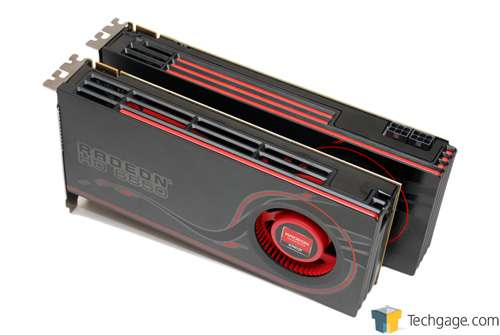- Qualcomm Launches Snapdragon 4 Gen 2 Mobile Platform
- AMD Launches Ryzen PRO 7000 Series Mobile & Desktop Platform
- Intel Launches Sleek Single-Slot Arc Pro A60 Workstation Graphics Card
- NVIDIA Announces Latest Ada Lovelace Additions: GeForce RTX 4060 Ti & RTX 4060
- Maxon Redshift With AMD Radeon GPU Rendering Support Now Available
AMD Radeon HD 6870 & HD 6850
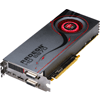
It’s been a long time coming, but gamers can finally relax… AMD’s Radeon HD 6800 graphics cards are finally here. They may still be built upon a 40nm process, but AMD has brought a lot to the table here. We set out to see how the HD 6850 and HD 6870 compare to their closest competition, NVIDIA’s GeForce GTX 460 and GTX 470.
Page 1 – Introduction
If one thing can be said about 2010 and the hardware industry, it’s that the GPU side of things was kept interesting straight through. As odd as it might sound, it was Intel that helped kick things off at the beginning of the year, with its Clarkdale processors. Those became the first offered with a GPU inside of a typical processor, leading the way to fusion design in 2011.
Then in March came NVIDIA with the long-awaited launch of its GF100 Fermi architecture, with the GeForce GTX 480 first kicking things off. That launch was interesting for a bunch of reasons, but the main one is that it took the company much longer than usual to follow-up to AMD’s previous launch of the HD 5000 series. NVIDIA here had a relative winner, although as we touched on in our launch article, things were far from perfect (heat, noise, power, et cetera).
Since that launch in March, NVIDIA has filled out the rest of its Fermi-based line-up, and overall, a lot of the offerings found there are attractive both from a pricing and performance standpoint. With the final “mainstream” card having been released a couple of weeks ago, the GeForce GTS 450, AMD wasted no time in bringing a brand-new launch to town… the HD 6800 series.
To call the launch “brand-new” might be a bit of a stretch, though, because while the HD 6800 cards do bring a lot to the table, they’re more of an evolutionary design rather than a revolutionary one. For this launch, AMD focused a lot more on refinements and improvements, rather than a completely new architecture.
Closer Look
Like no other, this Radeon HD series launch wasn’t much of a secret, with countless credible rumors being leaked over the past couple of months. As it is, many of you reading this article are already going to be aware of the new features, specs and other selling-points. Since much of this has been covered before, including on our site, we’re not going to delve too deep into the technical aspects of the new series, but focus more on what you all care about most… performance.
As mentioned before, the Radeon HD 6800 series of cards are best considered as being follow-ups to the HD 5000 series. There’s a multitude of refinements and tweaks, but at its heart, these cards aren’t a far stretch from what we’re already used to. In particular, AMD has stated that these launch parts, named Barts (part of the Northern Islands family) are mainstream offerings. Just how mainstream? The HD 6850 is set to retail for $179, while the HD 6870 will be priced at $239.

Thanks to NVIDIA’s just-announced price drop of its GeForce GTX 460 and GTX 470 cards, AMD has some solid competition right out of the gate. The GTX 460 1GB is set to sell for $199, while the GTX 470 will sell for $260. In deciding on this pricing, NVIDIA was aware of AMD’s HD 6800 SRPs, so it can be assumed that the performance between all of them might scale appropriately.
Like the HD 5000 series, the launch HD 6800 cards are built using a 40nm process, which means that despite being a major launch, there has been no die shrink. In fact, the opposite has happened. While the Juniper-based HD 5770 has a die size of 170mm², the HD 6870 has seen that bumped up to 255mm². From a performance perspective, the better comparison would be the HD 5850, which has a 334mm² die size. So depending on how you look at things, the die has either gotten larger or smaller.
I personally believe the latter, because to me, the HD 6870 is not an HD 5770 replacement, and even AMD has contradicted itself a bit in this regard. At a press event held last week, the company stated that there are no immediate plans to drop the HD 5770 from its line-up, and judging by one of the shown slides, it doesn’t look like we’ll ever see an “HD 6770”. That stands to change depending how things play out, but I wouldn’t hold your breath.
It’s for this reason that I don’t like the comparison of the HD 6870 to the HD 5770, because as it is, the HD 5770 is going nowhere. As of today, the current line-up goes like this: HD 5750 > HD 5770 > HD 6850 > HD 6870. Down the road, we’ll see both single and dual-GPU configurations of the HD 6900 series, but we can’t talk too much about that right now.
With all of that said, let’s quickly review the specs for AMD’s latest offerings:
|
Model
|
Core MHz
|
Mem MHz
|
Memory
|
Bus Width
|
Processors
|
| Radeon HD 6870 |
900
|
1050
|
1024MB
|
256-bit
|
1120
|
| Radeon HD 6850 |
775
|
1000
|
1024MB
|
256-bit
|
960
|
| Radeon HD 5970 |
725
|
1000
|
2048MB
|
256-bit
|
1600 x 2
|
| Radeon HD 5870 Eyefinity 6 |
850
|
1200
|
1024MB
|
256-bit
|
1600
|
| Radeon HD 5870 |
850
|
1200
|
1024MB
|
256-bit
|
1600
|
| Radeon HD 5850 |
725
|
1000
|
1024MB
|
256-bit
|
1440
|
| Radeon HD 5830 |
800
|
1000
|
1024MB
|
256-bit
|
1120
|
| Radeon HD 5770 |
850
|
1200
|
1024MB
|
128-bit
|
800
|
| Radeon HD 5750 |
700
|
1150
|
512MB – 1GB
|
128-bit
|
720
|
Because of the price points (at least, as of last week), AMD compares the HD 6870 mostly to the HD 5850, which as mentioned before, is fair given the performance. Comparing those two directly, AMD’s latest launch looks quite good. The die is smaller, and so is the number of transistors, but at the same time, there’s been some improvements, such as higher memory bandwidth, geometry throughput and of course, overall performance.
There are some cases where the new specs look a bit lackluster, especially given the lesser amount of SIMD engines and texture units, but thanks to all of the improvements AMD made to the revised architecture, that’s not really an issue at all. As hinted by the 3DMark Vantage scores shown here, the HD 6870 is the better performer.
The reference designs for the new cards is quite a bit different from the previous. There’s no more Batmobile styling, but rather a much flatter kind of chassis with a matte finish. The model names appear to be etched in, which to me, looks a bit strange.
As the HD 6850 card is best comparable to NVIDIA’s GTX 460, the most notable difference between the two is that AMD’s offering requires just one PCI-E connector, not two. For those who own beefy power supplies, this might not seem like a big deal, but if you have a 600W or similar PSU with only two PCI-E power connectors, this improvement will be hugely appreciated. It doesn’t just mean that the card is more power efficient, but it means that going the CrossFireX route is much easier.
The HD 6870 and HD 6850 cards as a whole aren’t all too aesthetically different, but one major exception is that at the end of the HD 6870 card, there are no vents for air to flow through. Any way you look at it, that’s an odd design choice, because common logic would tell you that having air sucked in through the back is not a bad thing.
As we’ll find out later, this design choice doesn’t create any major issues with the temperatures, but it still raises some questions as to why AMD to do it. Could it be solely for aesthetic purposes? It’s hard to say, but the cooler still does it’s job, and the card as a whole looks good, so overall, no complaints.
Here’s a better shot of both cards standing up. The HD 6850 has far more ventilation available, while the HD 6870 is mostly closed off.
We’ll continue our look on the next page, including some shots of the HD 6870 broken down.
Support our efforts! With ad revenue at an all-time low for written websites, we're relying more than ever on reader support to help us continue putting so much effort into this type of content. You can support us by becoming a Patron, or by using our Amazon shopping affiliate links listed through our articles. Thanks for your support!




